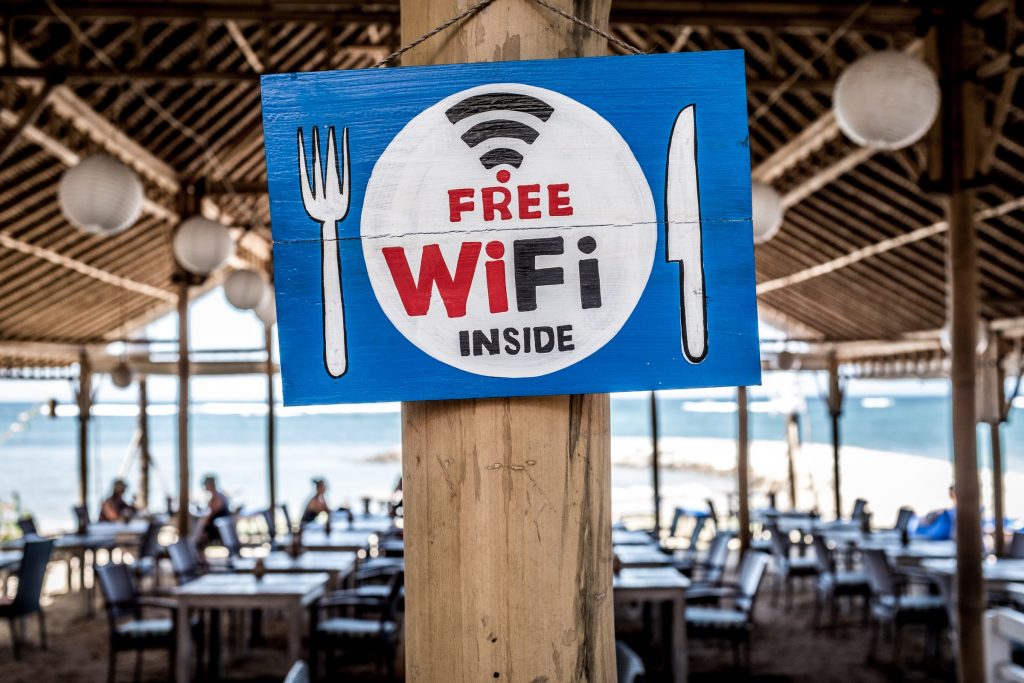Public Places with Free WI-FI
In our ever increasingly digital world, where we live more and more of our lives online, our need to connect to the internet is greater than ever before. Whether we’re scrolling through social media, shopping online, checking our bank accounts, or even simply looking at our email, wherever we go, we know we need to connect. Often, we’re tempted to connect to free wi-fi networks in public places in order to save our cellular data, but our cellphone hotspot is the best choice of the two as it is password protected and more secure. In situations where that is not possible, it’s best that we know what happens when we use an unsecured connection in common public places with free wi-fi, such as coffee shops, restaurants, stores, hotels, airports, and even busses and trains. It turns out that when it comes to connecting to public wi-fi, what we don’t know really can hurt us. Read on to learn how to best protect yourself when using public wi-fi networks.
Dangers of Public WI-FI
The danger in using public wi-fi really comes down most strongly to a flaw in WPA2 protocols, Wi-fi Protected Access Protocol 2, a security feature added to most wi-fi networks, including those for enterprise use (read: the coffee shops, stores, airports, and other locations where most of us attempt to use public wi-fi). WPA2 protocols were at one point assumed to be sufficiently safe, but that time ended in 2017, when the fatal flaw mentioned above, called KRACK, which stands for key reinstallation attacks.
When a hacker initiates KRACKing, they breach the encryption that is generated through the WPA2 protocol, and gain access to the network and begin accessing data that exists on that network’s transmissions, which can include such important, highly personal information as: your bank information, key pieces of your identity such as your social security number and driver’s license number, passwords to your accounts, and credit card numbers. Whenever you connect to a public wi-fi source, you are leaving yourself vulnerable to KRACK attacks by hackers, and risk exposing those valuable pieces of your personal information to thieves. How then, can we protect ourselves?
Public WI-FI Security
The good news in all this is, despite the fact that WPA2 protocols, including those that utilize the additional layer of protection that comes through Transport Layer Security with HTTPS addresses are not always secure enough for us to be impervious to hackers, we can still protect ourselves by following a few simple rules of thumb.
Keep it Confidential
- Do not attempt financial transactions or any transactions which require highly sensitive personal information (such as your social security number) while on public wi-fi.
Make Sure You Enable HTTPS
- While enabling HTTPS does not fully protect you against KRACK attacks and other types of hacking, it is still an additional layer of security you can use to help secure your information. If it was raining outside, and you’d rather wear both a coat and umbrella, but only had a coat, you’d still wear it, right?
Use a VPN
- A Verified Private Network, or VPN, allows you to create a secure connection to an already existing network, such as those used with public wi-fi. While VPNs aren’t free, they’re certainly worth the layer of effective security they afford anyone who frequently connects to wi-fi while out and about. Better to pay a little for a VPN than to lose unimaginable sums to a hacker.
Make Your Device Undiscoverable
- Windows devices come with firewall protection for public network connections that provide added security. Enable the Windows Firewall when the pop-up appears and ensure that your laptop is undiscoverable by other devices connected to that network. For similar protection on Apple devices, external software would need to be installed, but it is well worth the investment to protect your information and devices.
While we all love to connect to wi-fi wherever we are, allowing us to shop, check-in, touch base, and keep our lives altogether, there are dangers to our doing so. By following the simple steps outlined above, we can make our interactions with the internet itself a whole lot safer. Implement these additional layers of protection, and surf safely! Reach out to PGH Networks today to learn more ways to keep your devices secure.

